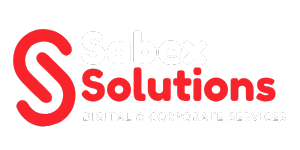
How to Recover from a Google Algorithm Update
Weathering the Storm: A Comprehensive Guide to Recovering from a Google Algorithm Update: If you’ve ever seen a sudden, dramatic drop in your website’s organic traffic, your first thought might be: “What did I do wrong?” Your second, more panicked thought, is likely: “A Google algorithm update.”
It’s a scenario that can strike fear into the heart of any website owner, SEO specialist, or content creator. Your search visibility—and by extension, your traffic, leads, and revenue—can plummet overnight through no direct action of your own.
But don’t panic. An algorithm hit is not a death sentence; it’s a course correction. It’s Google’s way of saying your site is no longer aligning with what it considers helpful, relevant, and authoritative for users. The path to recovery isn’t about gaming the system, but about genuinely improving your website to meet these new standards.
Here is your step-by-step guide to diagnosing the problem and recovering from a Google algorithm update.
Step 1: Diagnose the Problem – Confirm the Update
First, don’t assume. Correlation is not causation. A traffic drop could be due to technical issues, server problems, or seasonal trends.
- Check the Timeline:Visit trusted industry resources like Search Engine Journal, Search Engine Land, or Moz’s algorithm history page. They track and confirm Google updates. Did your traffic drop coincide with a confirmed update (e.g., a core update, helpful content update, or product reviews update)?
- Analyze Your Analytics:Dive into Google Analytics and Google Search Console (GSC). Look for the exact date the drop began. In GSC, check the Search Performance Have your impressions and clicks fallen off a cliff for a wide range of keywords, or just specific ones? A broad decline often points to an algorithm update.
Step 2: Identify Which Update Hit You
Google releases different types of updates, and your recovery strategy depends on which one you’re dealing with.
- Core Updates:These are broad, significant changes to Google’s overall ranking systems. They don’t target specific issues but rather re-evaluate all content against new, more advanced criteria. Recovery requires a holistic site improvement.
- Helpful Content System Updates:This system specifically targets content created primarily for search engines rather than people. If you’ve been overly focused on SEO keywords at the expense of user experience, this might be the culprit.
- Spam Updates:These target blatant violations of Google’s webmaster guidelines, like cloaking, scrapped content, and link spam. Recovery requires cleaning up these spammy practices.
- Product Reviews Updates:These aim to reward high-quality, expert product reviews over thin, affiliate-heavy content.
Step 3: Conduct a Rigorous Site Audit
Once you know which update, you’re facing, it’s time for a brutally honest audit of your website.
For Core & Helpful Content Updates, Ask Yourself:
- Does my content demonstrate E-E-A-T?Experience, Expertise, Authoritativeness, and Trustworthiness. Do you have author bios with credentials? Is the content accurate and well-researched? For YMYL (Your Money Your Life) topics, this is critical.
- Is my content truly helpful?Or is it shallow, summarizing other sources without adding unique value? Does it provide a comprehensive answer to the user’s query?
- What is my primary purpose?Be honest: was this page created first and foremost for people, or to rank in search engines? If it’s the latter, you have a fundamental problem.
- Are my titles and meta descriptions clickbait?Do they accurately reflect the content on the page?
For Technical and Spam Issues:
- Content Quality:Do you have large sections of thin, duplicate, or outdated content? Is your site full of automated or AI-generated content without human oversight?
- Backlink Profile:Use tools like Ahrefs or Semrush to audit your backlinks. Are there a significant number of toxic, spammy, or purchased links pointing to your site?
- User Experience (UX):Is your site slow, not mobile-friendly, or filled with intrusive ads? Is the navigation confusing?
Step 4: Execute Your Recovery Plan
Auditing is useless without action. Your recovery plan should be focused on substantial improvement.
- The “Content Greenhouse” Approach:Stop publishing new content for a moment. Focus all your energy on improving what you already have. Identify your top-tier pages that lost traffic and make them better.
- Update and Enhance:Add new information, refresh statistics, include more original insights, improve images, and add multimedia (videos, infographics).
- Consolidate:Merge thin, overlapping articles into one comprehensive, “pillar” page that serves as the ultimate guide on a topic.
- Remove:Don’t be afraid to delete irretrievably low-quality content that is harming your site’s overall reputation. Return a 410 “Gone” status code for pages you remove entirely.
- Clean Your House:If a spam update hit you, disavow toxic backlinks and remove any manipulative link-building patterns. Fix technical issues like broken links, redirect chains, and slow page speeds.
- Shift Your Mindset to People-First Content:From this point forward, every new piece of content should be created with a human audience as the primary focus. Write to inform, solve a problem, or entertain. SEO is a framework to help people find your great content, not the reason for the content’s existence.
Step 5: Be Patient and Monitor
Recovery from an algorithm update is not instant. Google must re-crawl and re-index your improved pages. This can take several weeks or even months, especially after a core update.
Continue to monitor your analytics and Search Console for signs of recovery. Look for gradual improvements in impressions and average ranking positions. A full recovery to previous levels isn’t guaranteed, but a significant improvement is a clear sign you’re on the right track.
Conclusion: An Opportunity in Disguise
While a Google algorithm update can feel like a catastrophic event, it’s ultimately a forced opportunity to refine, improve, and future-proof your website. By focusing on the fundamental principles of creating high-quality, user-centric content and maintaining a technically sound site, you don’t just recover—you build a stronger, more resilient online presence that can withstand whatever Google throws your way in the future.
